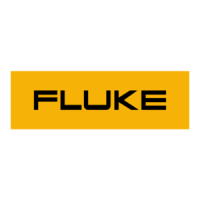measured by means of Analog/Digital
Converters.
The counter’s microprocessor calculates the
result after completing all measurements, i.e.
the digital time measurement and the analog
interpolation measurements.
The result is that the basic “digital resolution”
of ± 1 clock pulse (10 ns) is reduced to 100 ps
for the '90'.
Since the measurement is synchronized with
the input signal, the resolution for frequency
measurements is very high and independent of
frequency.
The counters have 14 display digits to ensure
that the display itself does not restrict the res-
olution.
Remote Control
This instrument is programmable via two in-
terfaces, GPIB and USB.
The GPIB interface offers full general func
-
tionality and compliance with the latest stan
-
dards in use, the IEEE 488.2 1987 for HW and
the SCPI 1999 for SW.
In addition to this 'native' mode of operation
there is also a second mode that emulates the
Agilent 53131/132 command set for easy ex
-
change of instruments in operational ATE
systems.
The USB interface is mainly intended for the
lab environment in conjunction with the op
-
tional TimeView™ analysis software. The
communication protocol is a proprietary ver
-
sion of SCPI.
Fast GPIB Bus
These counters are not only extremely power
-
ful and versatile bench-top instruments, they
also feature extraordinary bus properties.
The bus transfer rate is up to 2000 triggered
measurements/s. Array measurements to the
internal memory can reach 250 k measure
-
ments/s.
This very high measurement rate makes new
measurements possible. For example, you can
perform jitter analysis on several tens of thou
-
sands of pulse width measurements and cap
-
ture them in a second.
An extensive programming manual helps you
understand SCPI and counter programming.
The counter is easy to use in GPIB environ-
ments. A built-in bus-learn mode enables you
to make all counter settings manually and
transfer them to the controller. The response
can later be used to reprogram the counter to
the same settings. This eliminates the need for
the occasional user to learn all individual pro-
gramming codes.
Complete (manually set) counter settings can
also be stored in 20 internal memory locations
and can easily be recalled on a later occasion.
Ten of them can be user protected.
Preparation for Use
1-4 Preface

